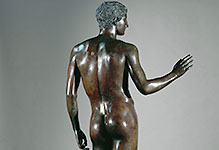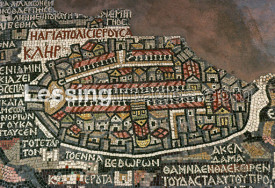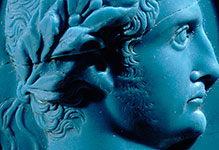
Antiquity
Ancient Egypt, Ancient Greece, Imperial Roman Period, Ancient Middle East.

#03010130
Female torso, probably Nefertiti, wife of Pharaoh Amenophis IV Akhnaton (1365-1...

#03010131
"Palermo stone",one of five kept in Palermo,Cairo and the Petrie Collection in...

#03010132
Seated statue of Nynofretmin,4th dynasty,2500 BCE.The lady Ninofretmin is seate...

#03010133
Limestone statue of Nenkheftka,5th dynasty,2400 BCE. The rendering of the facia...

#03010134
Limestone frieze of men and boys,6th dynasty,2300 BCE. Divided into three regis...

#03010135
Painted wooden statue of an official,Late Old Kingdom, around 2250 BCE.A young...

#03010136
Wooden models showing bakers at work, 12th dynasty, around 1900 BCE.The faces o...

#03010137
Head of Amenemhet III, 12th dynasty.Granite head with damaged nose. The pharaoh...

#03010138
Ivory Headrest, 12th dynasty, around 1985-1795 BCE. Such headrests,made normall...

#03010139
Statuette of a girl holding a khol pot, 12th dynasty, 1963-1787 BCE. The small b...

#03010140
Apotropaic wand, acting to ward off the dangers of childbirth and early infancy...

#03010141
Standing statue of Senebtefy,Late Middle Kingdom, 1700 BCE. Inscribed on the st...





